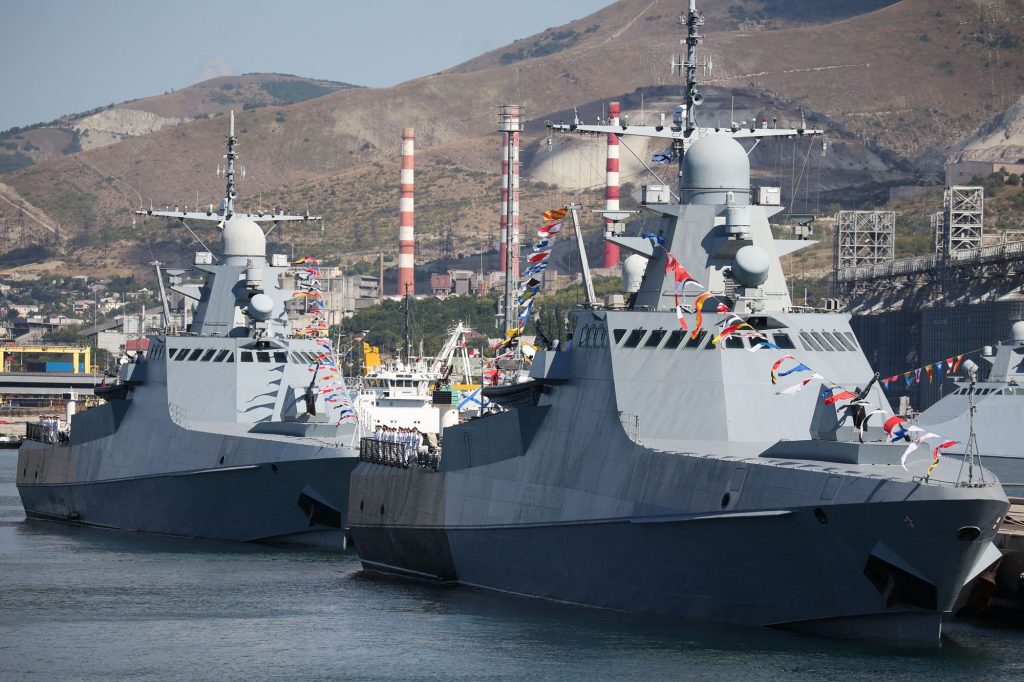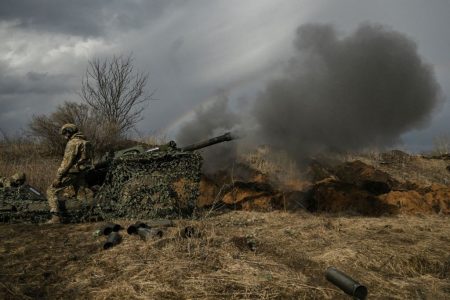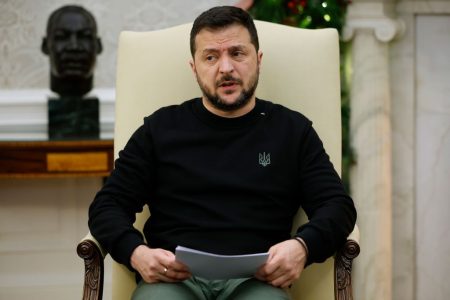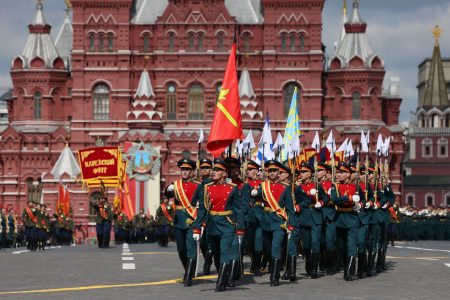Russian forces in occupied Crimea are constructing barriers at the entrance to Sevastopol Bay to prevent further Ukrainian strikes on the Black Sea fleet, as reported by the partisan group Atesh. Ukraine has intensified its attacks on Black Sea fleet targets in recent months, successfully targeting several ships and forcing Russian forces to redeploy to safer waters. The most recent strikes used missiles to hit three ships and a military communication center, leading Russian forces to block the passage of boats and put up new barriers at the sea entrance to the bay, potentially to prevent Ukrainian sea drone attacks. The Strategic Communications Center of the Armed Forces of Ukraine reported that as of early February 2024, 33% of the fleet’s warships had been disabled, including 24 ships and one submarine.
Ukraine struck two Russian Ropucha-class landing ships, “Yamal” and “Azov,” in occupied Crimea in late March, and on March 26, the landing ship Konstantin Olshansky was hit by a Neptune missile during the same attack. Ukraine’s domestically-produced Magura V5 naval drones have proven successful, with recent attacks including the destruction of a Black Sea fleet patrol ship named the Sergey Kotov. The continuous threat from Ukraine has prompted Russia to take measures such as replacing the commander of the Russian Navy earlier this month. Despite the resilience of Russia’s war machine, with the ability to replace losses using high oil export revenues, the country’s military may be facing challenges that are not immediately apparent.
The conflict in Ukraine has highlighted the ongoing struggle between Russian forces and Ukrainian resistance, with Ukrainian strikes targeting Russian Black Sea fleet ships and naval facilities in occupied Crimea. Russian forces are taking defensive measures to protect their fleet, including constructing barriers at the entrance to Sevastopol Bay. Ukraine’s successful use of naval drones and missiles has resulted in significant damage to the Russian fleet, with a reported 33% of warships disabled as of early February 2024. The situation remains fluid, with ongoing attacks and countermeasures from both sides.
The strength and durability of Russia’s war machine have been tested in the conflict in Ukraine, with the country’s ability to sustain losses and maintain military operations coming under scrutiny. Despite the significant number of troops lost in Ukraine, Russia has shown resilience in replacing its losses and continuing its military efforts. However, underlying vulnerabilities may exist within Russia’s military capabilities, which could impact its long-term sustainability in the conflict. The replacement of the commander of the Russian Navy suggests that Russia is taking steps to address potential weaknesses and adapt to the evolving situation on the ground.
The conflict between Russia and Ukraine continues to escalate, with both sides engaging in strikes and countermeasures in the Black Sea region. Ukrainian attacks on Russian Black Sea fleet targets have proven successful, leading to damage to multiple ships and naval facilities. Russia’s response, including the construction of barriers at Sevastopol Bay and the replacement of military commanders, reflects the ongoing struggle to maintain control and defend against Ukrainian aggression. The outcome of the conflict remains uncertain, with both Russia and Ukraine facing challenges and uncertainties as they navigate the evolving dynamics of the war.Independent journalism plays a crucial role in reporting on the conflict and providing insights into the complex and evolving situation in Ukraine. Support for independent journalists is vital in ensuring that accurate information is available to the public and that the voices of those affected by the conflict are heard. By supporting independent journalism, individuals can contribute to a better understanding of the situation in Ukraine and help shed light on the ongoing challenges and developments in the region.















